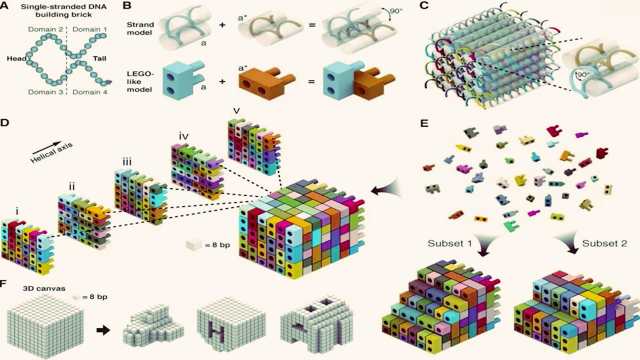In the ever-evolving field of nanotechnology, scientists have made groundbreaking strides that could change the landscape of various industries. One of the most exciting developments is the creation of self-assembling DNA bricks.
These innovative structures have the potential to revolutionize how we approach everything from drug delivery to materials science.
Self-assembling DNA bricks are essentially short strands of DNA that can spontaneously organize themselves into larger, more complex structures. This process is guided by the inherent properties of DNA, which allows it to form specific shapes and patterns based on its sequence.
Researchers at institutions like Harvard University and the California Institute of Technology have been at the forefront of this research, demonstrating how these DNA bricks can be designed to assemble into intricate nanostructures.
The implications of this technology are vast. For instance, in the realm of drug delivery, self-assembling DNA structures could be engineered to encapsulate therapeutic agents and release them in a controlled manner. This targeted approach could enhance the efficacy of treatments while minimizing side effects, a significant advancement in personalized medicine. Moreover, the ability to create precise nanostructures opens up new avenues for developing advanced materials with unique properties, such as improved strength or conductivity.
One of the most remarkable aspects of self-assembling DNA bricks is their versatility. Scientists can design these structures to perform specific functions, such as sensing environmental changes or responding to biological signals. This adaptability makes them ideal candidates for applications in biosensing, where they could be used to detect pathogens or monitor health conditions in real-time.
Additionally, the use of DNA as a building material is particularly appealing due to its biocompatibility. Unlike traditional synthetic materials, DNA is naturally occurring and can be safely integrated into biological systems. This characteristic is crucial for applications in medicine and biotechnology, where compatibility with living organisms is paramount.
The research surrounding self-assembling DNA bricks is still in its early stages, but the potential for future advancements is immense. As scientists continue to refine their techniques and explore new applications, we may soon see these nanostructures making their way into everyday products and medical treatments. For example, researchers are investigating how these DNA bricks could be used to create smart materials that change properties in response to external stimuli, paving the way for innovations in fields like robotics and environmental monitoring.
Moreover, the integration of self-assembling DNA bricks with other nanotechnology advancements, such as nanoparticles and nanowires, could lead to the development of multifunctional devices. These devices could combine sensing, drug delivery, and energy storage capabilities, creating a new class of smart materials that respond dynamically to their environment.
In conclusion, the creation of self-assembling DNA bricks represents a significant leap forward in nanotechnology. With their ability to form complex structures, adapt to various functions, and integrate seamlessly into biological systems, these DNA nanostructures hold the promise of transforming industries ranging from medicine to materials science.
As research in this field progresses, we can anticipate a future where self-assembling DNA bricks play a crucial role in addressing some of the most pressing challenges in science and technology. The journey has just begun, and the possibilities are as exciting as they are limitless.

